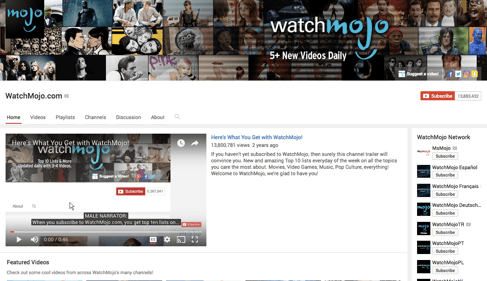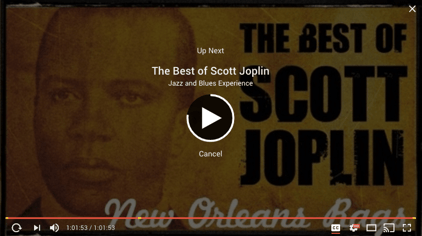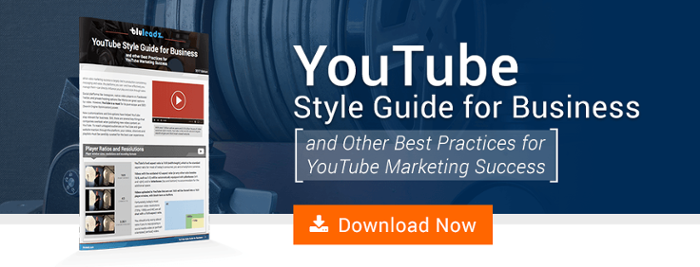 3.25 billion hours of videos are watched every single month on YouTube, and there are 4,950,000,000 total YouTube views each day. For businesses that use video to build their brand and close more deals, YouTube is a must. What are the best ways to use YouTube, and what are the most effective strategies businesses are using to excel on this platform?
3.25 billion hours of videos are watched every single month on YouTube, and there are 4,950,000,000 total YouTube views each day. For businesses that use video to build their brand and close more deals, YouTube is a must. What are the best ways to use YouTube, and what are the most effective strategies businesses are using to excel on this platform?
You don't need to spend a ton of money on paid video ads to see results with YouTube. Here are 4 essential steps businesses should take to make the most of the video hosting giant's service.
1.) Research Scope and Plan your Video/Vlog Calendar

Similar to blogging and social media, we highly suggest creating a standardized calendar for your business's video marketing efforts. This may even be the most difficult step in your video marketing efforts. What are your buyer personas? What are their pain points, and how can your products resolve those issues?
How can you use video content to properly address customer issues and convince viewers to reach out?
Consider adding video to your existing blog and/or social media editorial calendar, or even creating a separate calendar solely for video content. Just publishing a video on YouTube isn't good enough. Research what days, and what times of those days, are best for promoting your video across different mediums; what performs well on Facebook may not perform well on your website's blog.
This is essentially a call-back to video marketing 101: are you providing value? If you're in the early stages of video or YouTube marketing, creating video content that addresses your most common sales questions is a great way to start. You should also consider creating YouTube videos that address issues presented in your most-viewed blog posts. If your single, most organically viewed blog posts concerns "X ways to solve a data security breach," then supplement that content with a video and added conversion elements (annotations, links, even a playlist of your business's related videos).
Here are several great ways we've seen businesses use YouTube to market their business and build their brand.
- Event promotions (primarily social media)
- Whiteboard videos
- Product and promotional videos (for your website and social media)
- Webinars and software demos
- Live videos (via Facebook Live, Periscope, etc.)
- Company culture video (either on blog/company page or social media)
2.) Help, Don't Sell
In creating video content for YouTube and social media channels, it's important to not oversell. Video is meant to convey information, build brands and offer guidance; it's not meant to directly sell a product (although that's the end goal for most businesses). Much like blog content, video content isn't an avenue to pitch, but rather an avenue to inform.
While this is largely the case for video marketing in general, it's especially true for videos hosted and shared via YouTube. YouTube is social media for video. Sharing information and building buyer trust is at the core of the inbound marketing methodology, and should be the primary focus of your video marketing efforts with YouTube.
Know your audience (YouTube has very comprehensive analytics that you can use to determine your viewer's location, age, business and view source), and use this information to create video content that provides real value and resolves their issues. It's also a good idea to make your content and message more "human" by featuring your actual team, facilities and voice.
3.) Flesh Out Your Channel
To keep users coming back to your channel or boost your YouTube subscribers, we highly recommend putting out some for of content (such as a How To or Q& A video blog series) at regular intervals, if possible. Every Monday morning could be your business's video publish time; with consistency subscribers will grow to anticipate your content and look forward to your new offering each week. Don't just upload as videos are produced. Commit to a specific day, time or frequency to publish to your channel.
Additionally, businesses should make their YouTube channels a HUB for all video content and more than just a run-down of all uploads. Equip your channel with all branding and organize rows in a way that displays the most valuable content first. Also, consider shooting a quick Company Trailer video to feature at the top of your channel that tells audiences who you are and what they'll gain by subscribing to your channel. WatchMojo does a great job of this:

4.) Use Video as a SEO/Conversion Tool
YouTube (coincidentally, now a subsidiary of Google) is essentially its own search engine. What applies for typical SEO also applies for content uploaded to YouTube. Make sure all uploads are equipped with sufficient descriptions and tags, and are also appropriately titled;
Videos you upload to YouTube can also be used as powerful conversion tools, especially if you are unable to host your videos on more marketing-friendly, premium video services. While YouTube may not have the customizations and CRM integrations of some other hosting options, it's a great tool for businesses starting out with video or those looking to expand their social media audience. Video, in general, is also a big value-add for email marketing and sales efforts.
"Using the word 'video' in email subject lines boosts open rates 19%, click-through rates by 65%, and reduces unsubscribes by 26%."
Unlike videos uploaded with services like Wistia or VidYard, we do suggest that videos hosted on YouTube feature extended outro segments, as well as annotation links for your company's own related videos. The point of this is to effectively push back YouTube's Suggested Videos or autoplay of a video that YouTube deems relevant (the Up Next feature, shown below).

For businesses, YouTube performs excellently as a social media marketing tool. However, it also comes with drawbacks. Suggested and Up Next videos (you know, the ones that pop up after your selected video) could take potential buyers away from your site, and there are very limited marketing options for videos hosted on YouTube (no in-screen calls-to-action, email submission forms, etc.).
For this reason, we suggest a joint video marketing approach that incorporates YouTube, for its sheer user volume and scope, and another, more customizable video platform for most businesses.


Alex Dunn
Alex is a University of South Florida mass communications graduate and Video/Media Specialist at Bluleadz. He is a big movie nerd, loves (possibly dangerous) concerts and enjoys taunting co-workers with a camera. He's probably seen The Royal Tenenbaums 14 times by now.